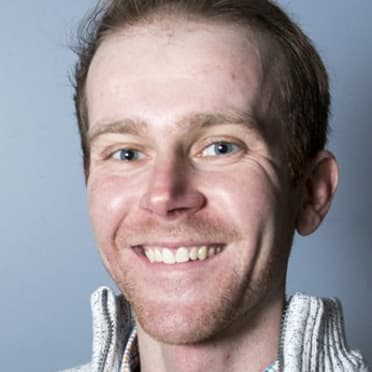This story was excerpted from Daniel Kramer’s Mariners Beat newsletter. To read the full newsletter, click here. And subscribe to get it regularly in your inbox.
BOSTON -- J.P. Crawford admittedly had some trepidation about entrusting his swing to outside counsel, but nearly six months after an extensive visit to Driveline Baseball, and with some nudging from the Mariners, Seattle’s shortstop has already seen significant results.
“I feel way stronger in the box,” Crawford said. “And I think that's helping, and going every day to Driveline this offseason, just trying to use my body in the right way. Using the ground up, using my legs more and really getting into the ball.”
Crawford has seen a 4.7 mph uptick on his average exit velocity this year, from 85.1 to 89.8, the third-highest jump in MLB entering Tuesday's games. Crawford has tried to add more slug to his game before, specifically by bulking up 20 pounds ahead of 2021. But these efforts are different.
“He knew there were some small swing things he could make adjustments-wise, but he just like generally wanted to be able to move the bat faster and hit the ball harder,” said Tanner Stokey, director of hitting at Driveline, the high-tech baseball facility in Kent, Wash.
Stokey’s team uses three components to assess a hitter in preliminary meetings: bat speed, bat-to-ball skills and swing decisions. Crawford, who leads the Mariners in both walk rate (16.6 percent) and on-base percentage (.373), graded above-average in the latter two but below average in bat speed. From there, they tailored a specific plan to make his profile more well-rounded.
“I'm trying to do damage at the plate, not just trying to slap some singles to the other side,” Crawford said. “I feel good right now.”
Crawford arrived roughly six weeks into the offseason, when he finally felt healthy after playing through significant back soreness down the stretch, and underwent an assessment with motion capture technology. They took in full biomechanics, rotational speeds and how he interacts with the ground, among other factors. The biggest emphasis was on Crawford’s lower body.
“How he was loading, how he was using the ground and how he was controlling his stride to get him into a position when he’s ready to swing, to get him in a position to actually rotate more effectively,” Stokey said, adding that Driveline saw noticeable gains within 2-3 weeks.
In the six-week period between his initial assessment and his final retest in the motion capture lab, before Crawford departed for Spring Training, his average bat speed was up by 5.5 mph and his peak exit velocity was up by 2.4 mph. He also increased his average attack angle by 7.6 degrees, the vertical angle of the barrel moving relative to the ground at bat-to-ball contact, where zero would be parallel to the ground. All data was shared courtesy of Driveline.
“With that much of a gain in that short amount of time, we definitely improved his bat speed -- but it was more about cleaning up his mechanics to let his bat speed play,” Stokey said.
Part of the increase could also be attributed to health, particularly with Crawford being as banged-up as any healthy player on Seattle’s roster late last season.
“I'm just trying to get my body right because it was a grind last year,” Crawford said. “You're going out there and you can't even swing at like 75 percent and people are wondering what's going on when you're just trying to survive out there. I'm finally healthy and putting my body in a good spot to get good pitches.”
Despite this being his seventh season, Crawford in many ways was still searching for himself as a hitter. His up-and-down trajectory as a former Top 5 prospect has been well-chronicled. He signed the $51 million extension. He’s won a Gold Glove Award. But he’s still hungry to improve.
“There’s a little bit of hesitancy to want to make a change because it’s just human nature to have a fear of failure and get out of your comfort zone,” said Stokey, who also worked with Taylor Trammell last offseason. “But honestly, the buy-in came pretty quickly.”
So far, so good on the results -- what’s next?
“To be honest with you, I think he’s got another gear,” Stokey said. “I’m pretty excited to see how things go for him the rest of the year.”
